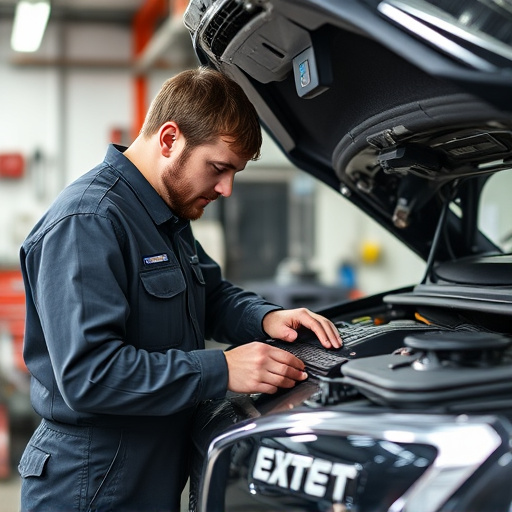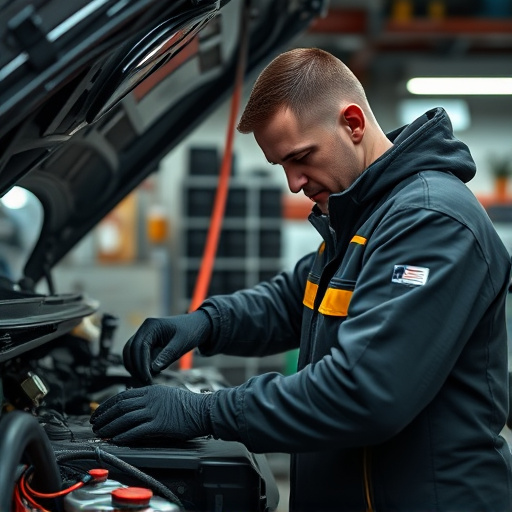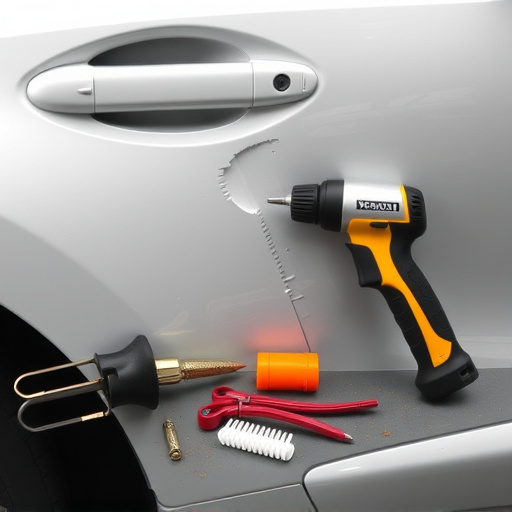Diagnosing and repairing cabin airflow issues in Mercedes vehicles involves checking air filters, examining evaporator cores, and addressing fans, vents, and scent components. The Mercedes fragrance system, which enhances driving experience, requires systematic repair to prevent odor or scent-free cabins. This process includes component identification, disassembly, cleaning, inspection, replacement with genuine spares, reassembly, and testing. Professional assistance is recommended for fleet repairs or complex cases.
Struggling with a musty or unpleasant cabin smell in your Mercedes? The issue could lie within the fragrance system, which plays a vital role in maintaining a pleasant aroma. This comprehensive guide tackles diagnosing airflow problems in Mercedes vehicles and offers a step-by-step repair process for the fragrance system. By understanding its function and following these detailed instructions, you’ll be equipped to restore the fresh scent of your Mercedes. Learn how to effectively address this common concern.
- Diagnosing Cabin Airflow Issues in Mercedes Vehicles
- Understanding the Fragrance System's Role and Function
- Step-by-Step Guide to Repairing Mercedes Fragrance Systems
Diagnosing Cabin Airflow Issues in Mercedes Vehicles

Diagnosing cabin airflow issues in Mercedes vehicles requires a systematic approach. The first step is to check the air filters for any blockages or debris buildup, as clogged filters can restrict airflow. This simple maintenance task is often overlooked but can significantly impact the overall performance of the Mercedes fragrance system and overall cabin comfort.
After ensuring the air filters are clean, the next point of inspection should be the evaporator core, a crucial component in the climate control system. Over time, this part can become contaminated with mold or dust, leading to reduced airflow. It’s worth noting that if the issue persists after replacing the filters and cleaning the evaporator, other components like the cabin air fans or vents might need attention. The Mercedes fragrance system repair process may then involve addressing these secondary issues for optimal performance.
Understanding the Fragrance System's Role and Function

The Mercedes fragrance system is more than just a pleasant aroma in your car. It plays a crucial role in enhancing the overall driving experience and creating a soothing atmosphere within the cabin. This sophisticated system is designed to disperse fragrances throughout the vehicle, offering a sensory escape from the outside world. By infusing the air with carefully selected scents, it contributes to passenger comfort and well-being during every journey.
When issues arise with the cabin airflow, the fragrance system may also be affected. Problems such as blocked or malfunctioning components can disrupt the even distribution of fragrances, resulting in an unpleasant odour or a lack of scent. Therefore, addressing these issues promptly through Mercedes fragrance system repair is essential to ensure both the functionality and aesthetic appeal of your vehicle’s interior, leveraging high-quality automotive repair services for optimal car body repair.
Step-by-Step Guide to Repairing Mercedes Fragrance Systems

Repairing a Mercedes fragrance system involves careful steps to ensure optimal performance and restore the pleasant interior aroma. Here’s a step-by-step guide for owners facing cabin airflow issues or who want to maintain their vehicle’s scent:
1. Identify the Source of the Problem: Start by inspecting the fragrance system components, including the control module, evaporator, and scent cartridges. Check for any visible damage, blockages, or signs of wear and tear. A previous vehicle collision repair might have affected these parts, so thorough examination is key.
2. Disassemble and Clean: Remove the fragrance system from the vehicle, taking note of how each part connects. Use appropriate tools to disassemble it safely. Clean all components with recommended cleaning agents to remove any buildup or debris. Pay close attention to the evaporator, as it’s crucial for scent distribution. Ensure that no foreign objects are blocking airflow passages.
3. Replace Defective Parts: If any parts show significant damage or malfunction during testing, replace them with genuine Mercedes-Benz spare parts. This includes the control module, evaporator, and scent cartridges. Proper installation is critical; follow the vehicle’s service manual for accurate replacement procedures.
4. Reassemble and Test: Once all parts are replaced, carefully reassemble the fragrance system, ensuring proper connections. Test the system by activating it in various settings to verify even scent distribution throughout the cabin. If issues persist, double-check connections and adjustments. For fleet repair services or complex cases, consider professional assistance from a Mercedes-Benz authorized service center.
After diagnosing cabin airflow problems in Mercedes vehicles, understanding the crucial role of the fragrance system, and following a step-by-step guide for repairs, you are now equipped to tackle and resolve issues effectively. Remember that a well-functioning Mercedes fragrance system not only enhances the overall driving experience but also contributes to the vehicle’s interior environment. Therefore, promptly addressing any problems through proper repair techniques is essential for both comfort and maintenance. Dive into these practices to ensure your Mercedes’ cabin scent remains as fresh and appealing as intended.













